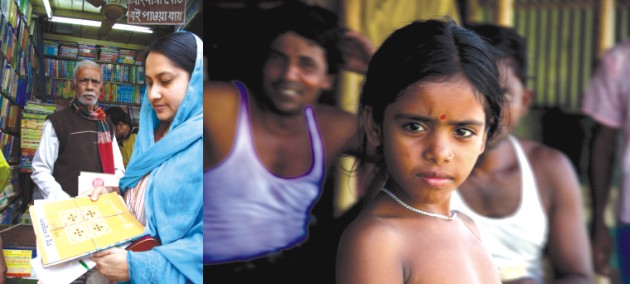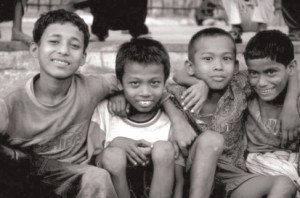Impressions
What do the Pictures Tell You?
Yamin Tauseef Jahangir

Photo: zahedul i khan
A photograph may say a thousand words but there are other sides to the story. We say a photograph changes perception or rather it shapes our perception and how we evaluate situations, things and even people. Pictures make you feel the agony or happiness or even the gravity of a circumstance and that is when you realise the importance of the moment for a person, a place or even for an entire nation. But how far is the photograph telling you the real story? A famous photographer, Lewis Hine once said, “while the photographs may not lie, liars may photograph”, and this, indeed is the very debatable question amongst the photographers' world and to what level it may be considered to be true. Media in our country has been playing a vital role in terms of making breaking news; while it also makes sure that the right kind of information is being delivered at the same time.
Over the years the visual and the print media have come across several hurdles yet making a point that we get to know what we think is our right. If we talk about freedom of speech in a democratic world then it is this mode of communication that works for all classes. But despite this there still remain loopholes. If you open up a Google website and type 'India', the fist image that would pop out on the screen is of a Taj Mahal and then other photographs of Rajastan and later on as you scroll down you would find the Gate of India which is located in Delhi. On such context, now move on to Bangladesh; all you would see at the beginning is few young women working on a tea garden and then it portrays the images of all the poverty-stricken faces of our country. It is true that the majority of the population in this country live below the poverty line and that we are considered as a developing nation, but the question is why are we being projected in such a manner all the time? I am sure with the booming population of India, there are certain places where people are facing poverty, or are suffering from flood and other calamities. If such is the case, then how is it that we do not get to see the images in these search engines? An American friend of mine once commented that she did not know about Cox's Bazar and it was the photographs of the flood victims that were all over the websites whenever she looked for the information regarding the longest coastline on earth. Sadly enough, I had no answer to that.
 |
Photo: Yamin Tauseef Jahangir |
Photographs deliver certain information which in a way help us to get a preconceived notion about a place and what conditions are prevailing there. If Bangladesh has to be portrayed then we still are being observed as a disaster prone nation that struggles to get a grip on life and how to cope with challenges. But there are other stories which we need to tell the world. Stories which are of success, that have made a mark in history need to be told and also need to be discussed amongst the youth. Media serves the purpose of being that particular voice to convey such messages to the outside world, but till date we are in one way or the other still being under scrutiny or observation. In recent times, several exhibitions are going on in various galleries where if you see things in simple terms, all the photographers are trying to create a positive image so that people outside our country see us in a better way. It is also true that what we see is what we believe, and pictures do tell you stories that can make your conscience speak. If that is so, then it is high time we sketch our country in bright colours of festivity and progress and click them to frame a prosperous Bangladesh. Once a Magnum Photos photographer Stuart Franklin took a photograph in 1989 at Tiananmen Square which eventually took the world by surprise as it gave a new look to how public can stir up a protest if they ever want to. Such is the power of pictures and when they cry out either of pain or of joy, we are touched by it.
It all depends on how we want to see our nation and on what grounds. Whether in politics, education, economy or culture, manipulation of image is the worst thing that can be done to get credibility and acceptance at the same time. One can argue over the fact that at times it may be necessary to make a story look more significant, but that way it also destroys whatever truth it might have possessed. As we talk and criticise on every single element starting from petty issues through pictures, we must bear in mind that it all depends on whether the public wants to see it, or whether they should be informed about it needless of the fact if they like it or not. Most of all the photographer who shows the world something with his or her eyes must be true to its authenticity.
Yamin Tauseef Jahangir is a reporter and photojournalist, Star Campus Magazine, The Daily Star.
Copyright
(R) thedailystar.net 2010 |
| |
